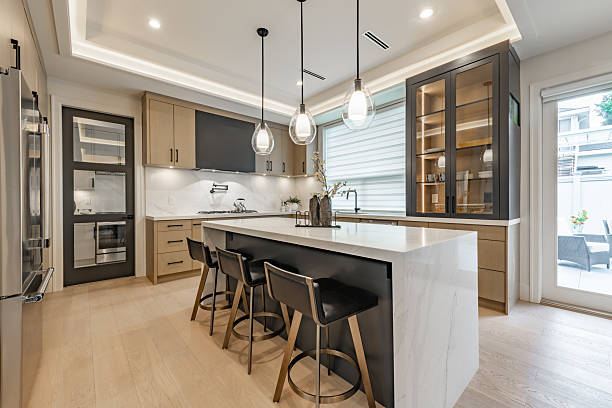Residential remodeling is one of the best ways to upgrade your home and give it new life. Whether you are updating a single room or making changes to the entire house, planning is the key. Without a clear plan, it’s easy to face delays, extra costs, and stress. A good plan makes the whole process smooth and enjoyable. Let’s go step by step to understand how to prepare for your residential remodeling project.
Start With Your Goals
Before anything else, you need to know why you want to remodel. Ask yourself what you hope to achieve. Do you need more space, better design, or improved function? Maybe you want to increase the home’s value before selling. Having clear goals helps you make the right choices during your residential remodeling project.
Set a Realistic Budget
Money is often the most challenging part of remodeling. Many people start without a budget, which can cause problems later. Think about how much you are willing to spend. Add some extra for unexpected costs because they always happen. A clear budget will guide you when choosing materials, finishes, and labor.
Create a Design Plan
Once you know your goals and budget, the next step is design. Think about how you want your space to look and feel. Gather ideas from magazines, websites, or even homes you admire. You can work with a professional designer or architect to make your vision real. A solid design plan helps your residential remodeling project stay on track.
Hire the Right Contractor
Choosing the right contractor is critical. Look for someone experienced, licensed, and with good reviews. Ask for references and check their past projects. Meet them in person to see if you feel comfortable working with them. A reliable contractor can make your project stress-free, while the wrong one can cause endless problems.
Get the Necessary Permits
Many residential remodeling projects need permits from your local authority. For example, adding rooms, changing plumbing, or electrical work often requires approval. Skipping permits can lead to fines and even force you to redo the work. Talk with your contractor about permits before starting.
Plan the Timeline
Time is just as important as money in remodeling. Ask your contractor how long the project will take. Keep in mind that delays may happen due to weather, materials, or unexpected issues. Having a clear timeline helps you prepare for disruptions in your daily routine.
Choose Quality Materials
When it comes to materials, quality matters more than looks. Cheap materials may save money now but will not last long. Choose strong and durable options, especially for high-use areas like kitchens and bathrooms. Good materials also make your home more valuable.
Focus on Function and Comfort
It’s easy to get carried away by looks, but function is just as important. Think about how you use your space every day. Is the kitchen easy to cook in? Is there enough storage? Will the new layout make your home more comfortable? A well-planned residential remodeling project balances beauty and practicality.
Prepare for Disruptions
Remodeling often disrupts your daily life. Noise, dust, and workers coming in and out can be stressful. If the project is big, you might need to stay somewhere else for a while. Plan ahead so that you and your family are ready for the changes.
Keep Communication Open
Good communication with your contractor is key. Check in often, ask questions, and make sure you understand what is happening. Clear communication helps avoid mistakes and keeps the project moving smoothly.
Think About Energy Efficiency
Residential remodeling is a great chance to improve energy efficiency. Consider better windows, insulation, or energy-saving appliances. These upgrades not only save money on bills but also make your home eco-friendly.
Don’t Forget the Small Details
Sometimes small details make the biggest difference. Think about lighting, hardware, or paint colors. These finishing touches bring your remodeling project together and give your home a fresh feel.
Review the Work
Before making the final payment, carefully check the work. Walk through your home with the contractor and note any issues. Make sure everything matches the plan and is done properly. A final review ensures that your residential remodeling project is truly complete.
Final Thoughts
Residential remodeling takes time, effort, and planning. But with the right approach, it can transform your home into a more beautiful and functional space. Start with clear goals, set your budget, choose the right contractor, and stay involved throughout the process. With these steps, your remodeling project will be a success.
FAQs
Q: How do I set the right budget for residential remodeling?
A: Start by listing what you need and want. Get quotes from contractors and compare prices. Always add 10–20% extra for unexpected costs.
Q: Do I always need permits for residential remodeling?
A: Not always. Small projects like painting or flooring may not need permits, but structural changes usually do. Check with your local authority.
Q: How long does a typical residential remodeling project take?
A: It depends on the size of the project. Small projects may take weeks, while larger remodels can take months. Always expect possible delays.
Q: How do I choose the best contractor for my project?
A: Look for licensed and insured contractors with good reviews. Ask for references, meet them in person, and check their past work.
Q: Can residential remodeling increase my home’s value?
A: Yes, remodeling can raise the value of your home, especially kitchen, bathroom, and energy-efficient upgrades. It’s a smart long-term investment.




